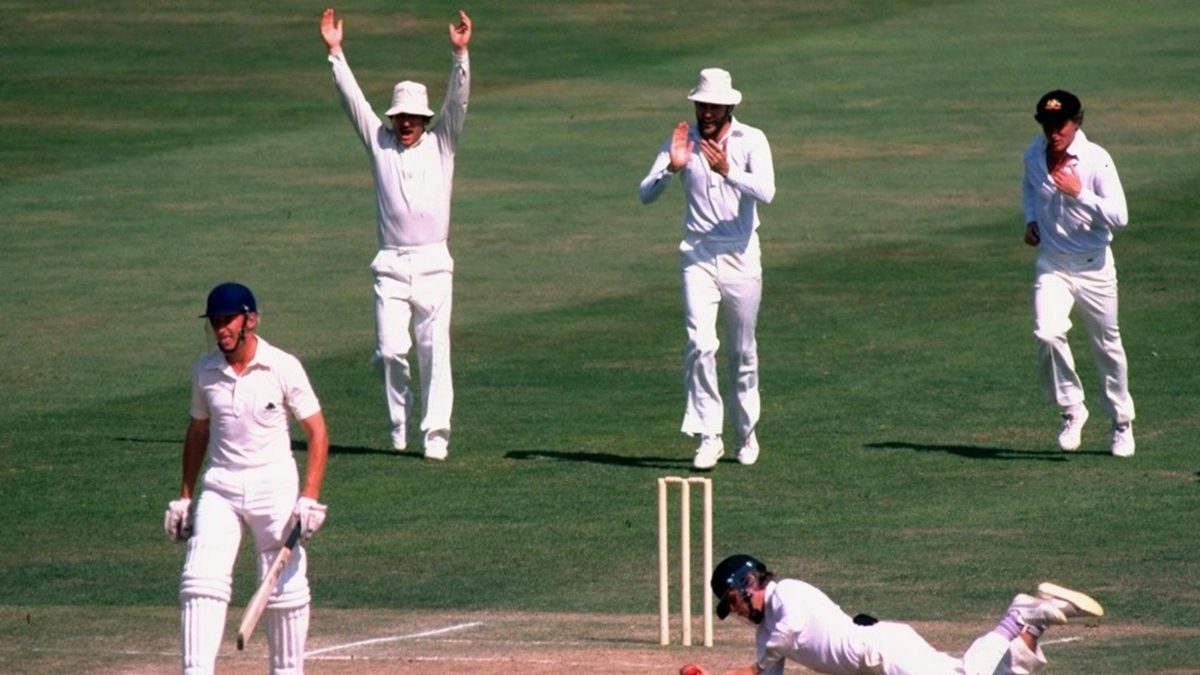
The Melbourne Cricket Ground is set to host a Test match to commemorate 150 years of Test cricket. It will not be the first commemorative Test in history.
Centenary Test: Melbourne Cricket Ground, Melbourne, 1976/77
From March 15, 1877, a representative Australian XI had hosted a touring England XI at Melbourne for a first-class match. This was the first entry on a list of games cricket historian Clarence Moody had compiled in 1894. Moody believed that these matches should get ‘Test’ status. Ever since this was accepted, the Melbourne Test is remembered as the first Test match in history. Australia had won this by 45 runs.
A hundred years later, the same two teams met at the same venue for a Centenary Test. In all, 218 Test cricketers from both nations were invited for the occasion. The Test match had many highlights, including Rick McCosker famously walking out to bat with a broken jaw and Derek Randall doffing his cap to Dennis Lillee after being hit on the head by a bouncer en route to a famous 174. In the end, Australia won again... by 45 runs. However, it was not part of the Ashes.
Golden Jubilee Test: Wankhede Stadium, Bombay 1979/80
The BCCI was founded in December 1928. To commemorate 50 years, they invited England for a Test match in Bombay. One oddity of the Test was its rest day, scheduled after the first day of the Test – to coincide with a solar eclipse. The BCCI invited every former Indian Test player for the occasion.
The Test match witnessed arguably the greatest performance in Ian Botham’s career – and that is saying something. It is difficult to top 6-58 and 114, but Botham did exactly that in India’s second innings, bowling 26 overs on the trot to finish with 7-48. With a first-innings 43 and a then-world-record 10 catches, Bob Taylor played the perfect support act.
However, all that might have gone in vain. After bowling India out for 242, England became 58-5 before Botham and Taylor took them to 143-5. At this point, Taylor was given out caught-behind, but Indian captain Gundappa Viswanath recalled him. The sixth wicket eventually fell at 229, as England ended up with a 54-run lead. India were bowled out for 149 in the second dig, as England chased down 96 without losing any wickets.
Centenary Test: Lord’s, London, 1980
The Lord’s Test marked a hundred years of Test cricket in England, though it was not played at The Oval, the venue of the 1880 Test match. The drab draw (again, not part of the Ashes) had three salient features. It marked the end of the legendary John Arlott’s illustrious career behind the microphone. Kim Hughes of Australia became the third cricketer to bat on all five days of a Test match.
But before that, on the rain-hit third day, the captains and umpires were making their way back from the middle after a fifth inspection when some MCC members manhandled umpire David Constant. Greg Chappell and Botham, the captains, came to Constant’s aid. Dickie Bird, the other umpire, had fallen behind and was spared the altercations. Astonishingly, there was no punishment for the members beyond “a stiff letter of warning”.
Bicentenary Test (s): Sydney Cricket Ground, Sydney, 1987/88
In 1988, Australia celebrated 200 years of the arrival of the First Fleet of British convict ships amidst protests from many corners, for it was also – in effect – a celebration of colonialism in the country and therefore insensitive and disrespectful to the Aborigines. The cricketing events included a first ever Youth (now Under-19) World Cup, the Women’s World Cup, and an Australia-England Test match that was, yet again, not part of the Ashes.
England amassed 425 and made Australia follow-on, but the Test match fizzled out to a draw after David Boon batted more than eight hours for an unbeaten 184. There was, however, a second ‘Test match’.
Organised by the Gestetner Company, this was a computer-simulated Test match between living all-time XIs from the two nations. After his virtual edition was dismissed by Harold Larwood for eight, the real Don Bradman, then 79, led the parade inside the SCG in a 1911 Rolls Royce at lunch on the second day. The cyber Bradman then predictably struck a hundred, and Australia won the ‘Test’ by 37 runs.
Centenary Test: Eden Park, Auckland, 1994/95
New Zealand Cricket was founded on December 27, 1894. To commemorate a hundred years, they hosted – among other events – a quadrangular men’s ODI tournament, a women’s triangular tournament, and an official ‘Centenary’ Test against South Africa.
New Zealand did well to take a 34-run first-innings lead, but that was about it. Hansie Cronje’s 101 helped him set a target of 275 in 63 overs. The hosts were three down when the final session began, but they folded against Fanie de Villiers (4-42) and Craig Matthews (3-47).
Follow Wisden for all cricket updates, including live scores, match stats, quizzes and more. Stay up to date with the latest cricket news, player updates, team standings, match highlights, video analysis and live match odds.








